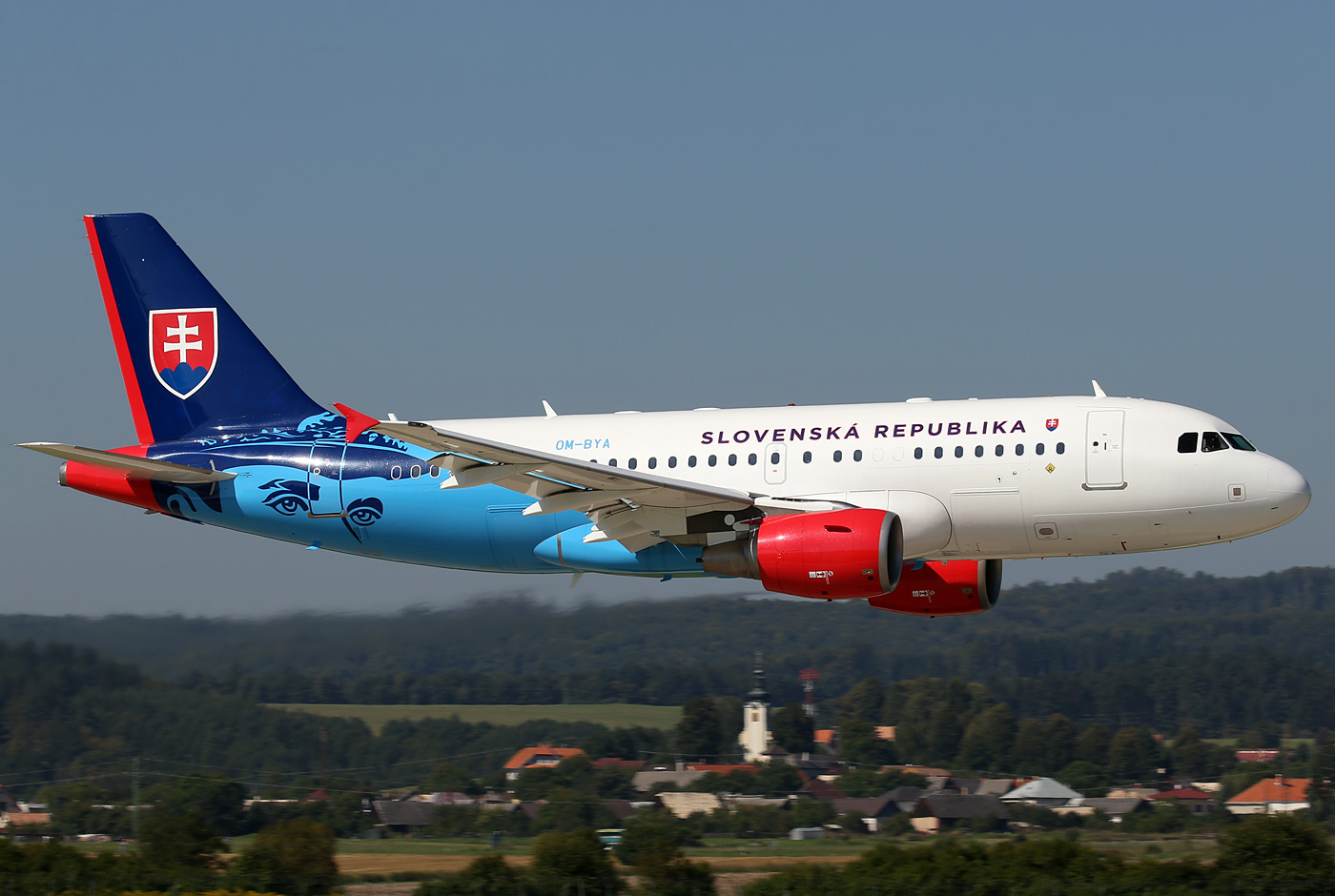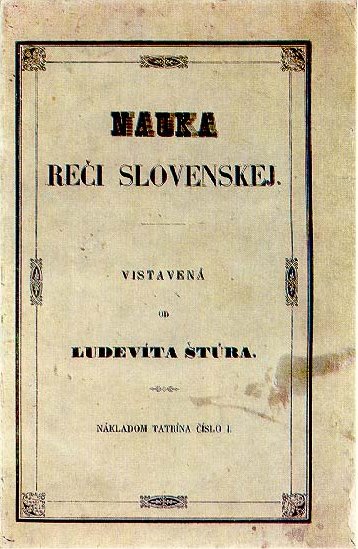|
StarûÀ Bystrica
StarûÀ Bystrica () is a village and municipality in áadca District in the é§ilina Region of Northern Slovakia. It is the home to one of the world's youngest astronomical clocks, completed in 2009.Slovenskû§ orloj v Starej Bystrici , municipality official website (in Slovak) History In historical records, the village was first mentioned in 1417.Geography The municipality lies at an of 484 metres and covers an of 36.909 kmôý. As of 2004, its |
Anton BernolûÀk
Anton BernolûÀk (; 3 October 1762 ã 15 January 1813) was a Slovak linguist and Catholic priest, and the author of the first Slovak language standard. Life He was born as the second child to a lower noble family in the ûrva region. He studied at a grammar school (gymnasium) in Rû°zsahegy (present-day Ruéƒomberok) from 1774 to 1778, and later in Nagyszombat (present-day Trnava) and Vienna, and graduated in theology at the general seminary in Pressburg (present-day Bratislava) in 1787. In the very same year, he codified the first Slovak language standard, which he based on western Slovak dialects spoken around Trnava, with some elements from the central dialects. The language, called ''bernolûÀkováina'', wasn't accepted as a national standard language, although it was a milestone on the way to the formation of the modern Slovak nation. From 1787 to 1791, he was a curate in Cseklûˋsz (present-day BernolûÀkovo), from 1791 to 1797 a secretary in the archbishopric vicar's offic ... [...More Info...] [...Related Items...] OR: [Wikipedia] [Google] [Baidu] |
Astrolabe
An astrolabe (; ; ) is an astronomy, astronomical list of astronomical instruments, instrument dating to ancient times. It serves as a star chart and Model#Physical model, physical model of the visible celestial sphere, half-dome of the sky. Its various functions also make it an elaborate inclinometer and an analog computer, analog calculation device capable of working out several kinds of problems in astronomy. In its simplest form it is a metal disc with a pattern of wires, cutouts, and perforations that allows a user to calculate astronomical positions precisely. It is able to measure the horizontal coordinate system, altitude above the horizon of a celestial body, day or night; it can be used to identify stars or planets, to determine local latitude given local time (and vice versa), to survey, or to triangulation, triangulate. It was used in classical antiquity, the Islamic Golden Age, the European Middle Ages and the Age of Discovery for all these purposes. The astrolabe, ... [...More Info...] [...Related Items...] OR: [Wikipedia] [Google] [Baidu] |
Adalbert Of Prague
Adalbert of Prague (, , , , ; 95623 April 997), known in the Czech Republic, Poland and Slovakia by his birth name Vojtách (), was a Czech missionary and Christian saint. He was the Bishop of Prague and a missionary to the Hungarians, Poles, and Prussians, who was martyred in his efforts to convert the Baltic Prussians to Christianity. He is said to be the composer of the oldest Czech hymn '' Hospodine, pomiluj ny'' and '' Bogurodzica'', the oldest known Polish anthem but his authorship of them has not been confirmed. Adalbert was later declared the patron saint of the Czech Republic, Poland, and the Duchy of Prussia. He is also the patron saint of the Archdiocese of Esztergom in Hungary. Life Early years Born as ''Vojtách'' in 952 or in gord Libice, he belonged to the Slavnik clan, one of the two most powerful families in Bohemia. Events from his life were later recorded by a Bohemian priest Cosmas of Prague (1045ã1125). Vojtách's father was SlavnûÙk (d. 978ã981 ... [...More Info...] [...Related Items...] OR: [Wikipedia] [Google] [Baidu] |
BystrûÙk
Saint BystrûÙk (Latin Beztertus Nitriensis, Bestredius, Bestridus, Bestricus, Bistridus, Bistritus; Hungarian Beszterûˋd, Besztrik, BesztrûÙd; died 1046) was a martyr and the Bishop of the Diocese of Nitra. BystrûÙk's bishopric BystrûÙk was probably of Slavic or Hungarian origin. The exact place and time of birth of St. BystrûÙk is unknown, however he seems to have come from aristocratic family who had been Christianised in the mission of Cyril and Methodius before the end of the Great Moravian Empire in 907 AD. He was likely born sometime at the turn of the 10th and 11th centuries in the vicinity of Nitra. It is assumed that BystrûÙk graduated from the St. Hypolita school at Zobor Abbey. The disciples of Cyril and Saint Gorazd were spreading out from Zobor at this time and included Astrik, Prokop Prokop may mean either of two Hussite generals, both of whom died in the 1434 battle of Lipan: * Prokop the Great * Prokop the Lesser Other people who bore the name Prokop: ... [...More Info...] [...Related Items...] OR: [Wikipedia] [Google] [Baidu] |
Gorazd
Gorazd is a given name. It is a Slavic version of the Hebrew given name Gilad which means Hill of Testimony, Monument. Notable people with the given name include: * Saint Gorazd, a disciple of Cyril and Methodius * Gorazd Hiti (born 1948), Slovene ice hockey player *Gorazd Kocijanáiá Gorazd Kocijanáiá (born 17 September 1964) is a freelance Slovene philosopher, poet and translator. Kocijanáiá is well known for his translation of the entire corpus of Plato's work into Slovene. Selected publications Kocijanáiá has p ... (born 1964), Slovene philosopher, poet and translator * Gorazd Mihajlov (born 1974), Macedonian football coach and former football player * Gorazd PavlûÙk (1879ã1942), Czech bishop, hieromartyr and saint * Gorazd Sotler (1930ã1987), Slovene sculptor * Gorazd Zajc (born 1987), Slovene footballer * Gorazd é kof (born 1977), Slovene handball player * Gorazd é tangelj (born 1973), Slovene road bicycle racer * Franáek Gorazd TiréÀek (born 1975), Slo ... [...More Info...] [...Related Items...] OR: [Wikipedia] [Google] [Baidu] |
Benedict Of Szkalka
Benedict of Skalka or Szkalka (, ) (10th century ãd. 1012), born ''Stojislav'' in Nitra, Hungarian Kingdom (modern day Slovakia), was a Benedictine monk, now venerated as a saint. He became a hermit and lived an austere life in a cave along the Vah River. Benedict was strangled to death in 1012 by a gang of robbers looking for treasure. He is venerated in Slovakia, Hungary, Poland and the emigrant diasporas in the United States. Life Benedict became a monk at the St. Hippolytus Monastery on Mount Zobor near Nitra, Slovakia (then Kingdom of Hungary) in the late 10th or early 11th century. He later became a hermit with his fellow saint and spiritual teacher Andrew Zorard. They lived an austere life in a cave along the VûÀh River near TrenáûÙn, in modern Skalka nad VûÀhom, Slovakia - then part of the Kingdom of Hungary. Andrew died in 1009, but Benedict continued to live in the cave for three years until he was strangled to death in 1012 by a gang of robbers looking for treas ... [...More Info...] [...Related Items...] OR: [Wikipedia] [Google] [Baidu] |
Andrew Zorard
Andrew Zorard (Hungarian language, Hungarian: ''ZoerûÀrd AndrûÀs'', ''Szû°rûÀd'', ''ZoûÀrd''; Polish language, Polish: ''Andrzej éwierad'', ''é£urawek'', ''é£û°rawek'', ''éwirad'', and ''Wszechrad''; Slovak language, Slovak: ''Svorad'', ''Andrej Svorad'', Czech language, Czech: ''Sverad''; German language, German: ''Zoû¨rard'', Latin: ''Zoerardus'') was a Benedictine monk originating from Poland but active in Slovakia (then Kingdom of Hungary, Hungary), who is venerated as a saint in the Catholic Church and the Orthodoxy, Orthodox Churches Life Zorard was born around 980 in Opatowiec, a small village in Poland. A tradition in the small village of Tropie, Lesser Poland Voivodeship, Tropie holds that in his youth he lived near there as a monk. At around the year 1000, at about the age of 20, he began living as a hermit and a missionary, evangelizing in Olawa, Silesia (modern Poland). At some time, he also traveled to northern Hungary (Slovakia) Around the year 1003 Zorard settled ... [...More Info...] [...Related Items...] OR: [Wikipedia] [Google] [Baidu] |
Cyril And Methodius
Cyril (; born Constantine, 826ã869) and Methodius (; born Michael, 815ã885) were brothers, Population of the Byzantine Empire, Byzantine Christian theologians and Christian missionaries, missionaries. For their work evangelizing the Slavs, they are known as the "Apostles to the Slavs". They are credited with devising the Glagolitic alphabet, the first alphabet used to transcribe Old Church Slavonic. After their deaths, their pupils continued their missionary work among other Slavs. Both brothers are venerated in the Eastern Orthodox Church as saints with the title of "equal-to-apostles". In 1880, Pope Leo XIII introduced their feast into the calendar of the Roman Rite of the Catholic Church. In 1980, the first Slav pope, Pope John Paul II declared them co-patron saints of Europe, together with Benedict of Nursia. Ecclesiastical letter#Letters of the popes in modern times, Apostolic letter of Pope John Paul II, 31 December 1980 Early career Early life The two brothers wer ... [...More Info...] [...Related Items...] OR: [Wikipedia] [Google] [Baidu] |
Andrej Hlinka
Andrej Hlinka (born 27 September 1864 ã 16 August 1938) was a Slovak Roman Catholic priest, journalist, banker, politician, and one of the most important Slovak public activists in Czechoslovakia before World War II. He was the leader of the Hlinka's Slovak People's Party, papal chamberlain, inducted papal protonotary, member of the National Assembly of Czechoslovakia, and chairman of the St. Vojtech Fellowship (a religious publication organization). Life Born in áernovûÀ (today part of the city of Ruéƒomberok) in the Liptov County Slovakia, which was under the rule of Austro-Hungarian kingdom), Hlinka graduated with a degree in theology from SpiéÀskûÀ Kapitula and was ordained priest in 1889. He tried to improve the social status of his parishioners, fought against alcoholism and organized educational lectures and theatre performances. He founded credit and food bank associations to help ordinary people and wrote a manual how to found further such organizations. In ... [...More Info...] [...Related Items...] OR: [Wikipedia] [Google] [Baidu] |
Milan Rastislav é tefûÀnik
Milan Rastislav é tefûÀnik (; 21 July 1880 ã 4 May 1919) was a Slovak politician, diplomat, aviator and astronomer. During World War I, he served at the same time as a general in the French Army and as Minister of War for Czechoslovakia. As one of the leading members of the Czechoslovak National Council (the resistance government), he contributed decisively to the cause of Czechoslovak sovereignty, since the status of Czech- and Slovak-populated territories was one of those in question until shortly before the disintegration of the Austro-Hungarian Empire, in 1918. His personal motto was "To Believe, To Love, To Work" (''VeriéË, milovaéË, pracovaéË''). Background é tefûÀnik was born in Kosaras, Nyitra County, Kingdom of Hungary, Austria-Hungary (now KoéÀariskûÀ, Slovakia), on 21 July 1880. He had 11 brothers and sisters, two of whom died at a young age. His father, Pavol é tefûÀnik, was a local Lutheran pastor, and his mother was AlbertûÙna JurenkovûÀ. He attended sch ... [...More Info...] [...Related Items...] OR: [Wikipedia] [Google] [Baidu] |
á§udovûÙt é tû¤r
á§udovûÙt é tû¤r (; 28 October 1815 ã 12 January 1856), also known as á§udovûÙt Velislav é tû¤r, was a Slovak revolutionary, politician, and writer. As a leader of the Slovak nationalism, Slovak national revival in the 19th century and the codifier of Standard language, standard Slovak language, Slovak, he is lauded as one of the most important figures in Slovak history. é tû¤r was an Community organizing, organizer of the Slovaks, Slovak volunteer Political campaign, campaigns during the Hungarian Revolution of 1848. He was also a politician, Slovak poetry, poet, journalist, publisher, teacher, philosopher, linguist, and member of the Hungarian Parliament. Biography Early life á§udovûÙt é tû¤r was born on 28 October 1815 in Uhrovec, Zayugrû°c, in the Austrian Empire (in the same house where Alexander Dubáek was later born) as the second child of Samuel and Anna é tû¤r. He was baptized in the Evangelical Lutheran church in Uhrovec. He acquired his basic education, inc ... [...More Info...] [...Related Items...] OR: [Wikipedia] [Google] [Baidu] |







